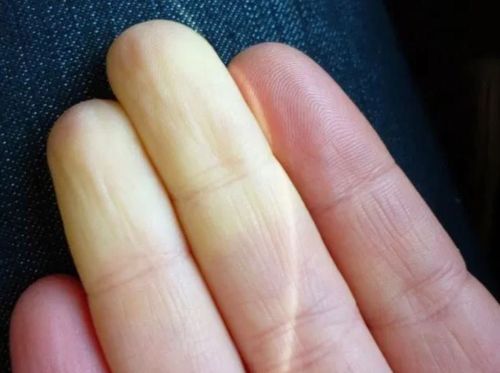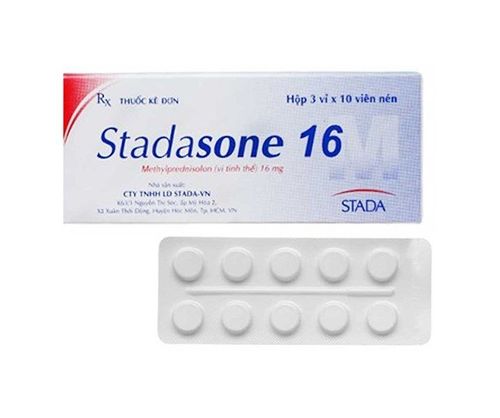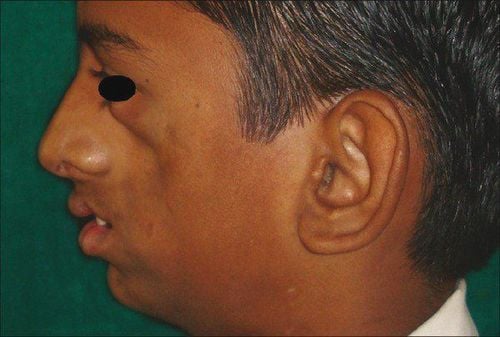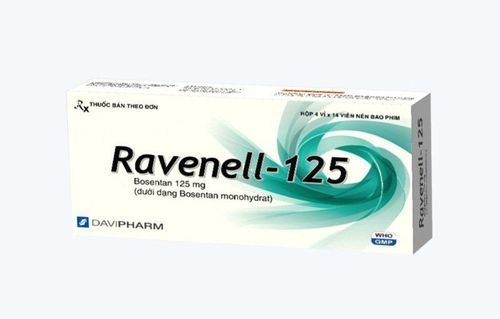This is an automatically translated article.
Scleroderma is divided into two main types. One is localized scleroderma, which affects only the skin. The other is systemic scleroderma, which affects the skin, tissues, blood vessels, and internal organs, such as the digestive tract, heart, lungs, or kidneys.1. Local sclerosis
The skin is usually the only organ affected in scleroderma. However, tissue damage can affect structures beneath the skin, including subcutaneous tissue, connective tissue, muscle, or bone. Skin lesions in people with localized sclerosis can get better over time, even disappearing on their own without treatment.
Localized scleroderma is also divided into two subtypes:
1.1. Localized plaque scleroderma (Morphea); Characterized by waxy, cracked patches on the skin of various sizes, shapes and colors. The skin under the patches often develops thickening. Patches of flaking skin may spread or narrow, then usually disappear spontaneously. Focal scleroderma is common in people between the ages of 20 and 50, but is also common in young children.
Based on the characteristics and distribution of waxy patches on the skin, localized plaque scleroderma is also classified into many smaller types, including:
Plates limited to one body area, oval, bordered red, thick central part and pale yellow (circumscribed morphea); Droplet-like plaque (guttate morphea); keloid-like plaques (keloid morphea); Multiple plaques forming areas of dark brown, thin, and sunken skin (atrophoderma); Greater than 4 plaques located in multiple anatomical areas, such as trunk, arms, head, or neck (generalized morphea).
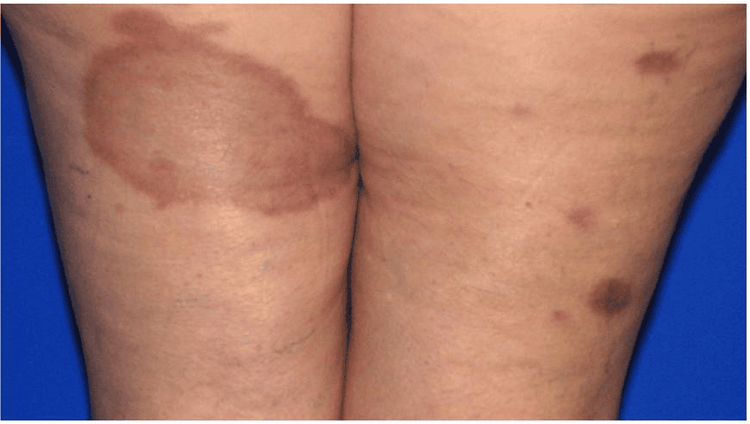
Hình ảnh ơ cứng bì khu trú dạng mảng (Morphea)
1.2. Linear scleroderma usually begins with a streak of hard, cracked skin on the arms, legs, or forehead. Sometimes the disease also produces a long crease on the head or neck, called en coup de sabre (en coup de sabre) because of its similar appearance to a slash scar.
This condition usually occurs in both the surface and deeper layers of the skin, sometimes even reaching into the moving joints below. Scleroderma mainly develops in children 10 years of age, affecting the growth of the involved limbs and leading to disability.
2. Systemic scleroderma
Systemic scleroderma affects not only the skin, but also the underlying organs, such as blood vessels, muscles, joints, digestive tract, kidneys, lungs, and heart.
Thickening of the skin causes tightness, loss of flexibility in movement, especially in the fingers. If it affects the face, systemic sclerosis will limit basic facial expressions, even making it difficult for patients to open their mouths. Systemic scleroderma can cause chronic joint pain, inflammation, and swelling in the muscles and joints.
Types of systemic sclerosis include:
2.1. Diffuse/progressive scleroderma Skin symptoms come on quickly and involve large areas of the body, usually the fingers, hands, arms, forearm, legs, and face. The tension in the skin in diffuse scleroderma causes the patient to experience dryness and itchiness.
People with diffuse scleroderma have an increased risk of scleroderma or, more commonly, musculoskeletal pain. Lesions also affect the gastrointestinal tract, kidneys, lungs and heart. The disease is life-threatening when the lungs or heart are severely affected. Systemic high blood pressure also carries a risk of kidney damage.
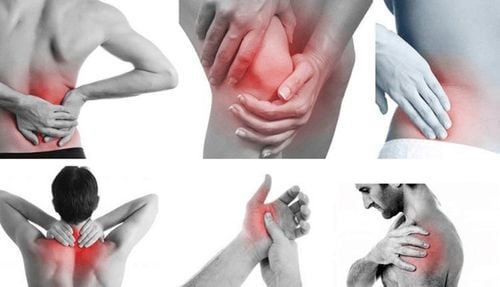
Xơ cứng bì lan tỏa / tiến triển có thể gây tổn thương đến cơ xương khớp
2.2. Limited scleroderma Limited scleroderma is the most common type of scleroderma. The disease is slow and benign, occurring in about 50% of patients. Skin manifestations develop slowly over many years, usually limited to the fingers, hands, and face. Internal effects are rare, if any, they are not serious and are often delayed onset for several years. In general, patients with limited scleroderma have a normal life expectancy.
However people with this condition may experience:
Problems with the digestive tract, especially heartburn; Raynaud's syndrome, hypersensitivity to low temperatures; Severe musculoskeletal pain; A few may develop pulmonary hypertension. Pulmonary hypertension is a life-threatening condition in which the blood vessels of the lungs narrow, reducing blood flow through the lungs and making it difficult for the patient to breathe.
2.3. CREST syndrome This is a subtype of limited scleroderma. CREST is an acronym for 5 most prominent clinical features, including:
Calcinosis - Calcification of the skin: The deposition of calcium salts under the skin and sometimes in organ tissues; Raynaud's phenomenon - Raynaud's syndrome: A lack of blood flow to certain parts of the body, such as fingers, toes or nose, usually caused by cold weather. The person's skin may be cold, numb or tingling and change color; Esophageal dysfunction - Esophageal dysfunction : The esophagus does not work properly, causing heartburn; Sclerodactyly - Callus on the tips of the fingers: The skin on the fingertips or feet becomes thickened, which interferes with the ability to perform fine motor movements; Telangiectasia - Varicose veins: Dilated blood vessels, which can be seen from the outside as red spots on the fingers, face, or other parts of the body.
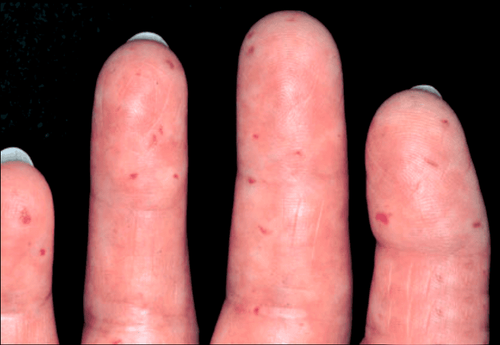
Giãn tĩnh mạch với các biểu hiện đốm đỏ trên ngón tay
2.4. Raynaud's syndrome Most patients also experience Raynaud's phenomenon - an overreaction to ambient temperature that makes the person particularly sensitive to cold weather. Raynaud's phenomenon causes the skin on the fingers to turn white or blue when exposed to low temperatures, or when feeling stressed or stressed. Some cases also have skin ulcers due to lack of blood flow.
2.5. Sine sclerosis The Latin word “Sine” means “not including/except”. Thus, Sine scleroderma is a type of systemic scleroderma, with all the features of the disease in the organ tissues, but excluding the skin symptoms. People with scleroderma may experience symptoms and complications similar to those of diffuse or limited scleroderma, except for signs of thickening of the skin.
The correct diagnosis of the type of systemic scleroderma is important for choosing the right treatment. Although there is no cure for focal scleroderma or diffuse scleroderma and all, there are ways to manage the condition, reduce symptoms, and continue living with the disease. best.
To register for examination and treatment at Vinmec International General Hospital, you can contact the nationwide Vinmec Health System Hotline, or register online HERE.
Reference source: Webmd.com; hopkinsscleroderma.org; voatiengviet.com; verywellhealth.com.




